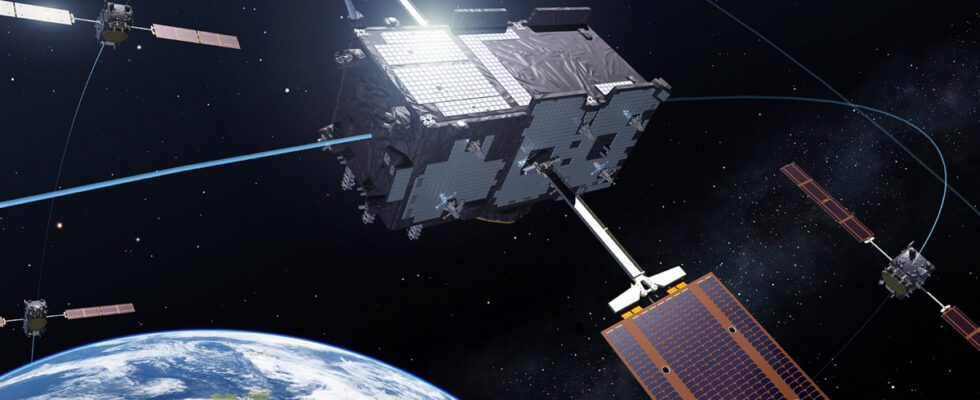10 years ago, almost to the day, on March 12, 2013, Europe could for the first time determine a position on the ground using its own independent navigation system. Beyond the issue of sovereignty, Galileo was designed in a civilian context, unlike the American GPS (Global Positioning System) and its Russian (Glonass) and Chinese (BeiDou/Compass) equivalents, developed by their respective armed forces.
4 billion compatible smartphones
10 years later, Galileo, made up of a constellation of 28 satellites and a network of ground control stations, is the most precise satellite navigation system in the world, offering precision down to one meter. If you have a smartphone in your hands, you must certainly be one of the approximately 4 billion priority compatible terminals. Galileo publishes the list of eligible models on its site, which is the case for devices sold in the single European market.
Galileo has also helped save thousands of lives. The geolocation system is the centerpiece of the eCall device which automatically generates a call to the emergency services (112) in the event of a serious road accident. It is compulsorily integrated into all vehicles put into circulation in the European Union since 2018.
Galileo’s beginnings were not easy, however. On its website, the European Space Agency (ESA) recalls the genesis of the program to design a European satellite navigation infrastructure. It dates back to 1993 and will successively take the names of GNSS-1, EGNOS and GNSS-2, before being definitively baptized Galileo.

13 billion euros “to be borne by European taxpayers”
In 1999, the European Commission gave the green light for commissioning scheduled for 2008. The first two pairs of satellites would in fact only be launched in 2011 and 2012. And, if the first Galileo services have been operational since December 2016 , it will be necessary to wait until the turn of the 2020s for the constellation of satellites to be almost complete.
In the meantime, the project will have suffered a large number of technical problems. For lack of private funding, the 27 will also be forced to put their hands in their pockets. According to a report by the Court of Auditors dating from 2016, the project over the period 1994-2020 was to cost 13 billion euros to be borne by European taxpayers, including 2.45 billion euros for the French share.
Since then, Galileo has caught up with the GPS with which it has been compatible since 2004. It is even more precise, with a range of around one meter, thanks to atomic clocks present on each satellite, compared to an accuracy of 5 to 10 meters for the American system, restricted in its civil use.
Accuracy reduced to 20 cm
Thanks to this metric precision, Galileo intends to make a difference in the fields of rail and maritime transport, agriculture or rescue operations. Galileo even increased its lead. Last January, the ESA indicated that it was able to provide a horizontal precision of up to 20 cm and a vertical precision of 40 cm thanks to a new high precision system (HAS).
With this increased precision, the EU Space Program Agency (EUSPA), responsible for the operation of Galileo, has identified different use cases, such as precision agriculture, resource exploration or surveying. terrestrial and hydrographic, but also more emerging applications related to robotics, autonomous vehicles or drones.
A market of 492 billion euros in 2031
As ESA reminds us, the basic principle of Galileo is simple. “Satellites in space transmit signals incorporating very precise time measurement, accurate to billionths of a second. A receiver picks up signals from four or more Galileo satellites and measures how long it took for each signal to reach it. It then converts these time values to distance by multiplying the numbers by the speed of light. The receiver then checks the ranges of all the satellites to pinpoint its location on the Earth’s surface. »
Beyond the issue of sovereignty, the GNSS (global navigation satellite systems) market is particularly buoyant. According to a study by the EUSPA, the turnover generated by the sale of devices and especially the associated services should reach 492 billion euros by 2031, i.e. an average annual growth of 9.2% in a decade. .

